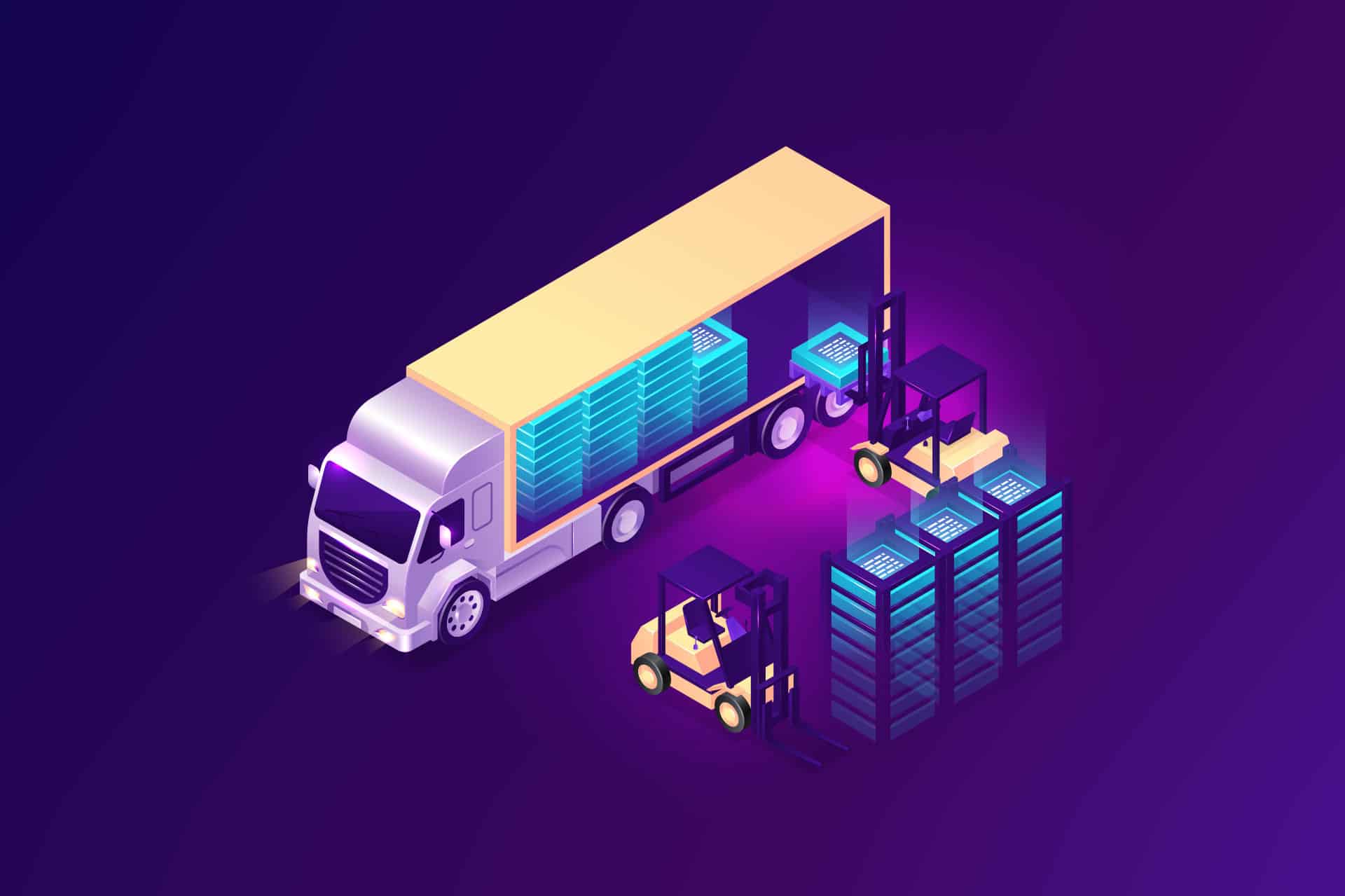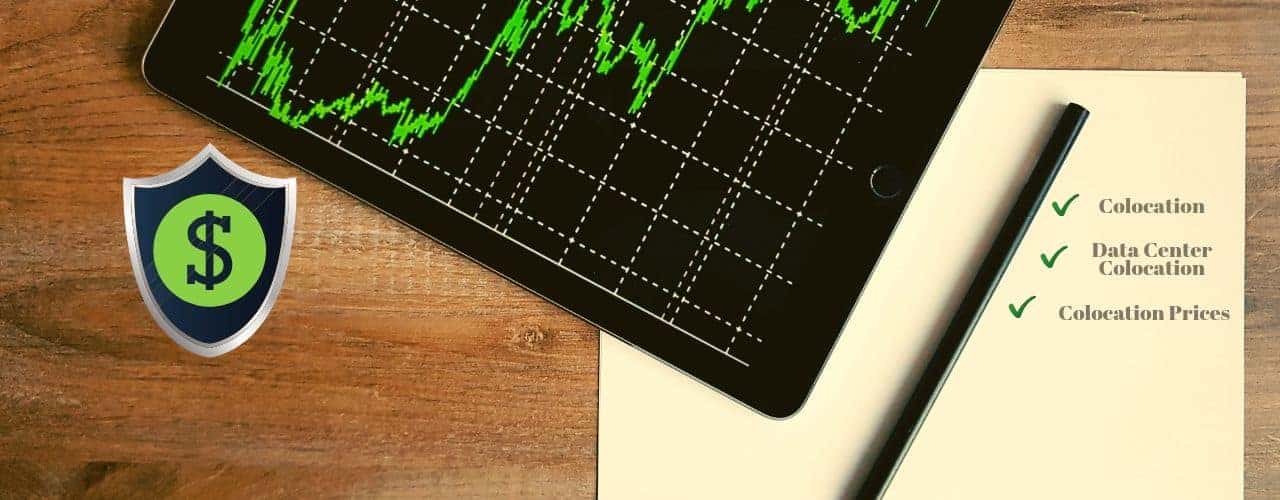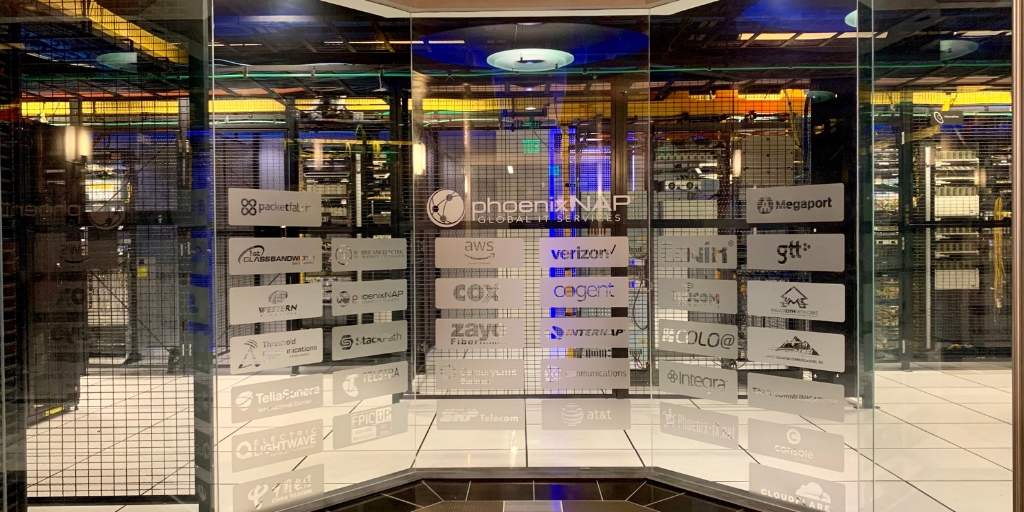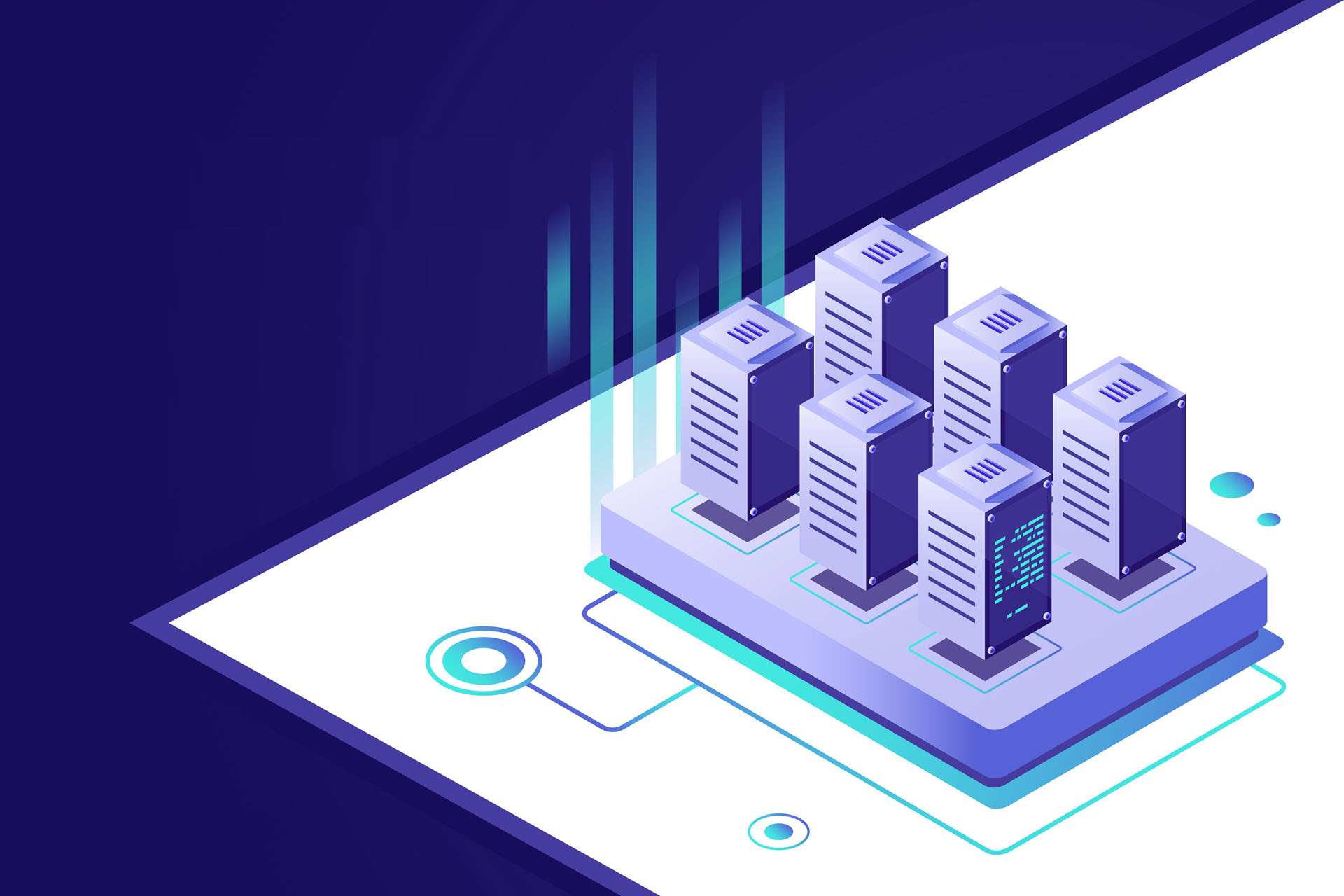Data center tiers are a crucial factor when choosing a facility to host your data. The tier rating reveals what a data center can offer in terms of reliability and performance, so failing to identify the right tier can lead to downtime issues or unnecessary expenses.
This article explains how data center tiers work and how these rankings enable you to assess the quality of a data center. Read on to learn how to use the tiering standard to find a facility that fits your business' needs and budget.
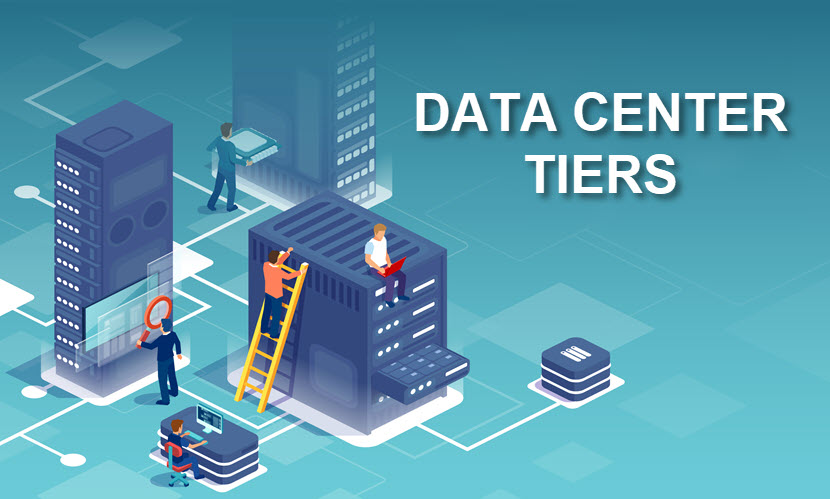
What Are Data Center Tiers?
Data center tiers are a standardized ranking system that indicates the reliability of data center infrastructure. This classification ranks facilities from 1 to 4, with 1 being the worst and 4 the best-performing level.
A data center receives this international ranking from the Uptime Institute, an independent organization that determines the facility level primarily based on:
- Uptime guarantees.
- Fault tolerance (the ability to handle both planned and unplanned disruptions).
- Service cost.
This unbiased tier system gives an objective understanding of how a specific data center operates. However, having a rating is optional, so not all data centers have an assigned tier. Most major facilities choose to request an evaluation from the Uptime Institute, though, as an official rating helps:
- Build service credibility.
- Market the facility's capabilities.
- Build trust and attract potential clients.
- Plan for future upgrades and facility expansions.
Data center staff needs to send site plans and blueprints (Tier Certification of Design Documents) to the Uptime Institute to get an official rating. Representatives from the Uptime Institute then visit the center on-site to inspect operations and assign a rating.
Determining what data center tier your business needs is just the first step to finding the right partner. Our article on data center selection will guide you through the rest of the process.
What Factors Are Considered for Data Center Tier Classification
The Uptime Institute keeps the exact method of assigning tiers secret, but most key metrics are a matter of public knowledge. The Institute considers the following factors when rating a facility:
- Service availability and uptime guarantees.
- Redundancy levels (the process of duplicating critical components and keeping them as backups and fail-safes in case of planned or unplanned disruptions).
- The state of cooling and power infrastructure.
- Staff expertise and maintenance protocols (particularly the ability to handle concurrent maintainability).
- Service cost.
- Operational sustainability and the center's ability to meet long-term business goals.
- The time a facility requires to set up a new client.
- Data center security levels.
- Carrier neutrality.
The tiering system does not require the use of any specific technologies or design choices. The freedom to choose between solutions grants flexibility when meeting tier goals, so every data center can choose the best way to meet the standards and reach the desired rating.
Data Center Tier Ratings Explained
The four data center tiers certified by the Uptime Institute are:
- Tier 1: A data center with a single path for power and cooling, and no backup components. This tier has an expected uptime of 99.671% per year.
- Tier 2: A data center with a single path for power and cooling, and some redundant and backup components. This tier offers an expected uptime of 99.741% per year.
- Tier 3: A data center with multiple paths for power and cooling, and redundant systems that allow the staff to work on the setup without taking it offline. This tier has an expected uptime of 99.982% per year.
- Tier 4: A completely fault-tolerant data center with redundancy for every component. This tier comes with an expected uptime of 99.995% per year.
The four data center tiers are progressive. Data centers can move up and down the ratings, and each level includes the requirements of the lower rankings.
While reliability goes up with higher levels, tier 4 is not always a better option than a data center with a lower rating. Each tier fits different business needs, so tiers 3 or 4 (the most expensive options) are often an over-investment.
Data Center Tiers Compared
The table below offers a high-level overview of the four data center tiers and shows what different models provide to clients.
| PARAMETERS | TIER 1 | TIER 2 | TIER 3 | TIER 4 |
| Uptime guarantee | 99.671% | 99.741% | 99.982% | 99.995% |
| Downtime per year | <28.8 hours | <22 hours | <1.6 hours | <26.3 minutes |
| Component redundancy | None | Partial power and cooling redundancy (partial N+1) | Full N+1 | Fault tolerant (2N or 2N+1) |
| Concurrently maintainable | No | No | Partially | Yes |
| Price | $ | $$ | $$$ | $$$$ |
| Compartmentalization | No | No | No | Yes |
| Staffing | None | 1 shift | 1+ shift | 24/7/365 |
| Typical customer | Small companies and start-ups with simple requirements | SMBs | Growing and large businesses | Government entities and large enterprises |
| The main reason why companies select this tier | The most affordable data center tier | A good cost-to-performance ratio | A fine line between high performance and affordability | A fault-tolerant facility ideal for consistently high levels of traffic or processing demands |
Already have privately-owned hosting equipment? Colocation hosting enables you to house your servers in a third-party data center, and enjoy all the performance and redundancy benefits of a top facility.
Tier 1 Data Center
Tier 1 infrastructure provides the power and cooling capacity to support the full IT load. These facilities have a single path for power and cooling, and there is no redundancy for any critical system. The staff must shut down operations entirely for regular maintenance or emergency repairs.
The requirements for a tier 1 facility are:
- An uninterruptible power supply (UPS) for power spikes and outages.
- A designated space for IT systems.
- An engine-generator.
- Dedicated cooling equipment that runs outside office hours.
Tier 1 data centers also require systems, protocols, and equipment that ensure the data center is up and running beyond standard office hours (nights and weekends).
Due to a lack of backups, tier 1 data center clients can expect up to 28.8 hours of downtime per year.
Tier 2 Data Center
Tier 2 infrastructure has all the features of a tier 1 data center but with added backup options. These data centers offer better protection against disruptions with:
- Extra engine generators.
- Energy storage.
- Chillers.
- Raised floors.
- UPS modules.
- Pumps.
- Heat rejection equipment.
- Fuel tanks and cells.
- Extra cooling units.
Like tier 1, tier 2 centers rely on a single distribution path for power and cooling, so these facilities are still vulnerable to unexpected disruptions. The uptime is better than with a lower-rated data center, so tier 2 clients experience up to 22 hours of downtime per year.

Tier 3 Data Center
A tier 3 data center is a concurrently maintainable facility with multiple distribution paths for power and cooling. Unlike tier 1 and 2 data centers, a tier 3 facility does not require a total shutdown during maintenance or equipment replacement.
A tier 3 facility requires all the components present in a tier 2 data center, but these facilities must also have N+1 availability:
- "N" refers to the necessary capacity to support the full IT load.
- "+1" stands for an extra component for backup purposes.
N+1 redundancy ensures an additional component starts operating if the primary element runs into a failure or the staff removes the part for planned maintenance.
Tier 3 data centers also require a backup solution that can keep operations running in case of a local or region-wide power outage. The facility must ensure equipment can continue to operate for at least 72 hours following an outage.
Tier 3 setups have a significant jump in availability when compared to lower ratings. Clients that rely on a tier 3 data center experience up to 1.6 hours of downtime per year.
Tier 4 Data Center
Tier 4 data centers add fault tolerance mechanisms to the tier 3 list of requirements. These data centers have multiple physically isolated systems that act as redundant components and distribution paths. Besides all the tier 3 conditions, a tier 4 facility must ensure:
- All components have the support of two generators, two UPS systems, and two cooling systems.
- Each distribution path is independent so that a single failure in one does not cause a domino effect with other components.
- Operations continue to run for a minimum of 96 hours following a local or regional power outage.
- The power source does not connect to any external source.
The separation between redundant components is vital for a tier 4 data center. Physical separation prevents a local event from compromising both systems.
Tier 4 data centers either have 2N or 2N+1 redundancy:
- 2N redundancy (or N+N) means the facility has a wholly mirrored, independent system on stand-by. If anything happens to a primary component, an identical backup replica starts operating to ensure continued operations.
- The 2N+1 model provides twice the operational capacity (2N) and an additional backup component (+1) in case a failure happens while a secondary system is active.
A level 4 facility can ensure clients do not experience more than 26.3 minutes of downtime annually. The reason why tier 4 service level agreements (SLAs) do not guarantee 100% uptime is because of a slight chance a component might run into a problem during the maintenance of its redundant counterparts.
Looking for a more agile hosting option? A virtual private data center provides the benefits of an on-prem data center without the high upfront costs for scalability. Learn more about software-defined setups in our intro to virtual data centers (VDCs).
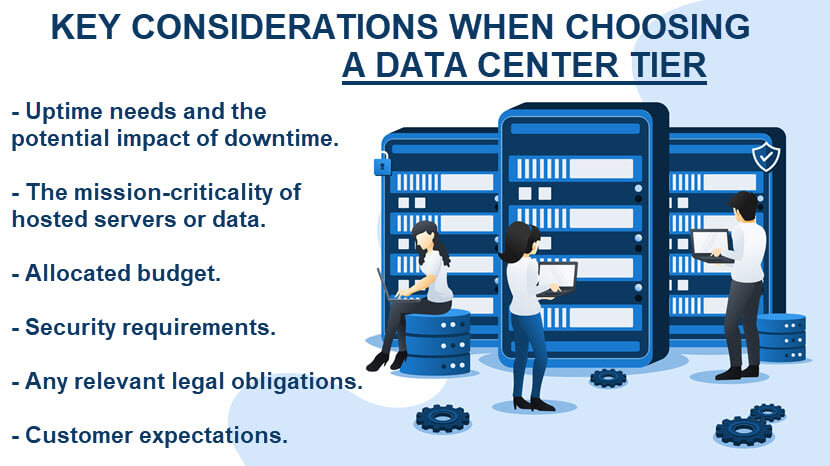
Which Data Center Tier Is Right for You?
While higher tiers offer a more reliable service, selecting a tier 3 or 4 is not always the right choice. Decision-makers should choose a data center tier that meets their business needs the best.
Certain types of companies typically gravitate towards specific tiers. Here is a breakdown of each tier's usual customers:
- Tier 1: These data centers are best suited to small businesses and start-ups looking for the most affordable hosting option. Small firms without complex IT requirements or around-the-clock operations can tolerate more frequent downtime.
- Tier 2: These facilities are the go-to option for SMBs that want a cost-effective, more reliable option than a tier 1 partner. Small to medium-sized firms typically use tier 2 facilities, often to host data backups or non-mission-critical databases.
- Tier 3: These types of data centers are ideal for large companies with IT operations that need extra fail-safes. Businesses that host extensive data sets (particularly customer data) are prime candidates for this tier.
- Tier 4: These data centers fit enterprises without budget constraints that require uninterrupted availability. Government organizations and large enterprises with mission-critical servers and intense customer or business demands are typical users of a tier 4 facility.
Typically, the two primary considerations when choosing a tier are cost and uptime. Paying for a level 3 data center when a cheaper facility would do the job is a waste of money. Likewise, setting up at a tier 2 facility when you require higher uptime can impact your revenue, productivity, customer satisfaction, and reputation.
PhoenixNAP's Bare Metal Cloud is an easy-to-deploy dedicated server with high uptime and a pay-as-you-go model that ensures you are never overpaying for your hosting needs.
Choose the Right Tier and Avoid Downtime Issues (or Unnecessary Overpaying)
Where you keep your data matters, so knowing the distinctions between the facilities that host your info is vital. Use this article to familiarize yourself with the different options on the market and make an informed decision that ensures your business does not overpay or run into downtime issues.
